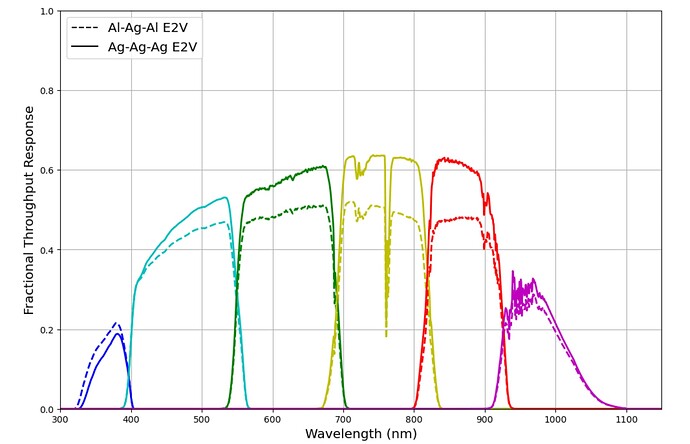I would like to announce that rubin_sim v1.3.0 has been released.
A major update with this release is that the data associated with rubin_sim has been updated to use a newly released 1.9 set of throughput curves. This affects the throughputs, skybrightness and skybrightness_pre data associated with rubin_sim_data. Running
rs_download_data --force --dirs throughputs,skybrightness,skybrightness_pre
will update these data files.
These new throughput curves include as-measured filter throughputs, as-measured broadband coatings for the lenses, and as-measured reflectivities for the mirrors – it’s exciting getting to see some better predictions for expected performance!
An additional change in the throughputs is that the mirror coatings have moved from Aluminum-Silver-Aluminum (for M1-M2-M3) to “triple silver” (silver coatings on all mirror surfaces). This has the effect of lowering u band throughput, but raising redder bands (particularly r band). As the survey spends more time/visits overall in redder bands, this does have the effect of improving the equivalent “exposure time” of the survey by about 18% with the current distribution of visits. The SCOC will take into consideration whether or not to redistribute time between visits (such as adding additional or longer u band visits).
A quick comparison of the throughput curves between Al-Ag-Al and triple silver (using an average QE curve from one of the detector vendors):
and a more detailed evaluation of the throughput curve differences can be found here: https://github.com/lsst-pst/syseng_throughputs/blob/main/notebooks/SilverVsAluminum.ipynb
We anticipate releasing a v3.3 of the baseline survey before the end of September, using these new throughput files and skybrightness values.
